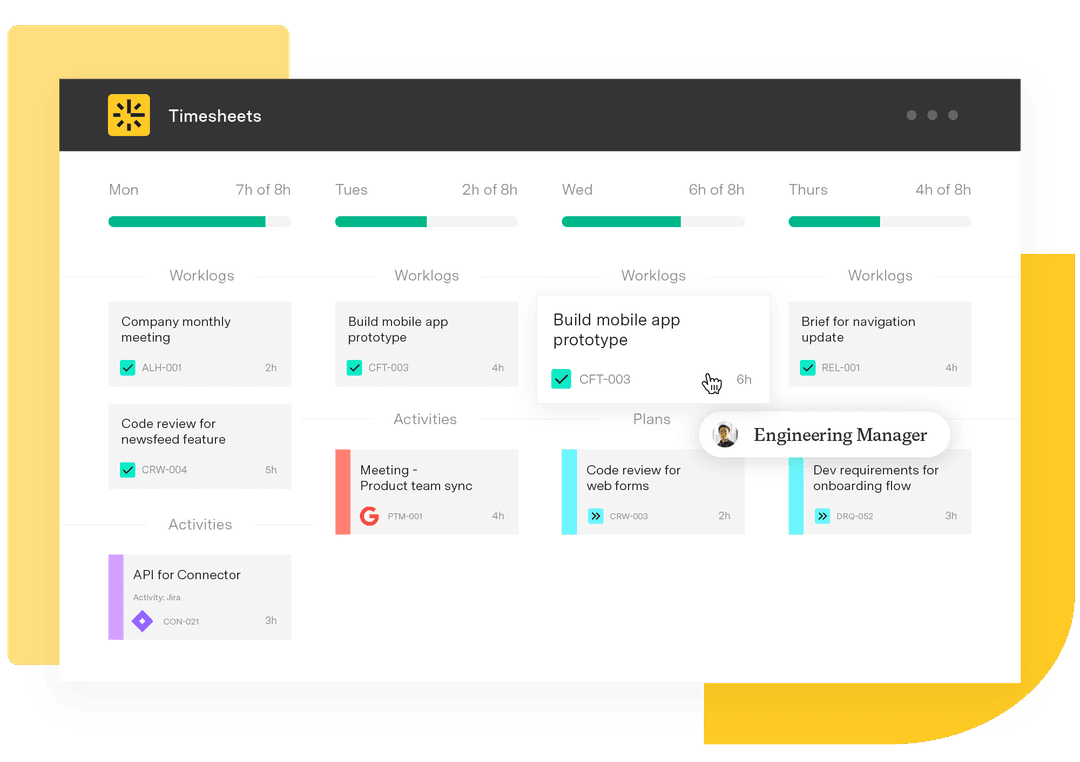Planning for the first quarter of the year: 4 tips
Tempo Team
Toward the end of the calendar year, many organizations start first-quarter planning. The first quarter is unique. It isn’t just another fiscal cycle – it’s a crucial phase that sets the tone for all four quarters of the year ahead.
Planning for the big picture before next year’s first quarter will increase your business’s operational or strategic success later on. If done right, it helps organizations better allocate resources, predict new market directions, respond flexibly to economic ups and downs, and align themselves better to customer needs.
What is quarterly planning?
The quarterly planning process focuses on aligning an organization’s short-term goal-setting with its broader vision and strategy. It typically involves setting specific targets, defining key projects, allocating budgets, and creating metrics for evaluating success each quarter.
With this planning method, adjustments can be made throughout the year (as opposed to annual planning, which is rarely flexible enough to consider dynamic modern marketplaces).
Quarterly planning enhances how businesses manage their resources, allowing for periodic reviews and adjustments of budgets and resources. This is crucial in today’s fast-paced business environment, where strategic allocation of resources is necessary for maximizing returns and efficiency.
Plans are often constructed in the form of key performance indicators (KPIs), which define the targets for the quarter and maintain focus and motivation to achieve these targets. Advanced planning tools further streamline the process of tracking goals in real time with greater precision.
Why is planning for the year’s first quarter important?
The first quarter of a business year is vital, as it establishes the foundation and direction for the coming months. During this planning phase, teams can reflect on the past year and discuss the challenges, lessons, and wins.
Here are some reasons to spend your last quarter planning ahead so you can face the new year with enthusiasm:
Spurring new momentum
A new year often brings a sense of renewal – for individuals, teams, and companies more broadly. Your Q1 planning can harness this heightened energy, rallying teams around a clear plan that sustains their motivation.
Assessing and adapting to market conditions
Markets evolve constantly, influenced by economic shifts, technological advancements, and consumer behaviors, which differ significantly from year to year. Q1 is the best time to analyze these evolving trends and integrate any relevant insights into your strategic planning.
Experimenting for the year ahead
For some, the first quarter is an experimental phase to pilot new projects or operational processes on a smaller scale before rolling them out company-wide.
Creating alignment within teams
A business that sets clear objectives and priorities at the beginning of the year ensures every department and team is aligned with the broader company vision. A solid Q1 plan not only inspires individuals; it also highlights how their role fits within the bigger picture.
4 tips for a successful Q1
Planning for each new quarter will differ between organizations, but some tips apply to any business currently engaged in first-quarter planning:
1. Reflect on the previous year
Begin your quarterly planning by reviewing the previous year, considering what was achieved and how. Look at the targets that weren’t met and initiatives that didn’t go to plan, and discuss how to avoid similar pitfalls in the coming year.
For a more structured assessment, utilize tools like “strengths, weaknesses, opportunities, and threats” analysis (SWOT) to dissect the past year’s performance and establish a plan for Q1 and beyond.
2. Set goals as a team
Involving the whole team in the goal-setting process increases the likelihood that individual team members will feel a sense of ownership and commitment toward the goals. Consider using collaborative goal-setting frameworks like SMART to ensure everyone understands what the team plans to achieve.
3. Visualize your plans
Visualizing the Q1 plan with Gantt charts, flowcharts, or other graphics helps reinforce the stated objectives, bringing them to life and making them easier for team members to remember.
4. Measure your success
Your Q1 plan shouldn’t be a set of vague aspirations. It should be grounded in tangible and measurable metrics. Develop KPIs that align with the goals laid out in your Q1 plan and determine how they will be monitored.
Performance management software will help you track and report on progress, providing detailed insights that inform your team’s business decisions. Focus on metrics that directly reflect the health of your projects and the progress toward your strategic goals.
Enhance your planning with Tempo
To further streamline your quarterly planning, consider utilizing advanced software, like Tempo’s suite of Jira-enabled tools.
Tempo offers robust planning features, such as Capacity Planner and Timesheets, that integrate with your existing systems, enabling you to automate scheduling, track time, and assess your team’s availability and workload at a glance. With Tempo, you can plan more efficiently and free up time to focus on strategic business goals.
Planning for the first quarter is about setting goals and creating a dynamic framework that allows your business to thrive in a dynamic environment. Together, our tips and tools can help you set a strong foundation for the year ahead.
Sign up for a demo
Register




































